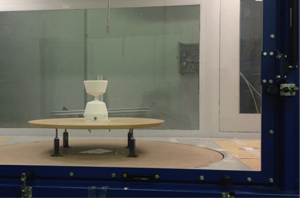
Special Issue:
"Rain sensors"
Guest Editors:
Prof. Filippo Giannetti
Prof. Luca G. Lanza
Deadline for manuscript submissions:
30 September 2021
Special Issue:
"Precipitation Measurement Instruments: Calibration, Accuracy and Performance"
Guest Editor:
Prof. Luca G. Lanza
Deadline for manuscript submissions:
30 September 2020
New publication:
Cauteruccio et al. (2020)
The role of free-stream turbulence in attenuating the wind updraft above the collector of precipitation gauges.
Journal of Atmospheric and Oceanic Thechnology, 37, pages 103-113.
(.pdf)
The first european standard on the accuracy of precipitation measurements instruments has been published as EN 17277:2019 "Hydrometry. Measurement requirements and classification of rainfall intensity measuring instruments"
kick-off meeting of the new EURAMET/EMPIR project INCIPIT "calibration and accuracy of non-catching instruments to measure liquid/solid atmospheric precipitation" hosted by the Lead Centre in Vigna di Valle.
The Lead Centre partecipated to the WMO/CIMO Technical Conference on Meteorological and Environmental Instrument and Methods of Observation in Amsterdam
The Lead Centre partecipated to the JMA/WMO Workshop on Quality Management of Surface Observations- RA II WIGOS Project in Tokyo
The Lead Centre partecipated to the Metoemet final meeting in Moncalieri (Tourin), presentig the results performed in the Research Excellence Grant (REG3) of the Meteomet2 project.
The Lead Centre partecipated to the EGU 2017 conference with poster presentations on wind tunnel experiments and precipitation measurements issues.
The Lead Centre will participate to the WMO TECO 2016 conference and the International Conference on Metrology for Meteorology and Climate with poster presentations on the more recent research developments and ongoing collaborations.

Wind tunnel experiments are currently under execution at the DICCA laboratories to provide information on rain gauges performance under turbulent winds and validation of CFD numerical analysis.
Oral presentation at the AMS annual meeting in New Orleans. Download the presentation.

Oral and poster presentations at the UrbanRain workshop (Pontresina). Download the short paper on the jointed CFD activity with EML.
The Lead Centre has recently signed a new research agreement with LSI LASTEM to study an improved rainfall intensity sensor compliant with UNI 11452:2012.

Presentation at the Arctic Metrology breakout session of the Arctic Circle 2015 Assembly.
New publications about the Lead Centre CFD studies available on AMS journals.

Installation and set-up of aerodynamic gauges and a laser disdrometer at the Vigna di Valle field site.
In human history, abundant atmospheric precipitation has often had a positive acceptation, while the lack of it was sometimes viewed as a visitation from god and a punishment for human sins. The need for the occurrence and recurrence of precipitation is historically testified by the presence of dedicated Gods in most ancient religions (e.g. Chac - Mayan god of rain, Ishkur - god of rain and storm in the Mesopotamian mythology, Baal - god of storm in the Phoenician mythology, Seth - the Lord of storm for Egyptians, and many others). As a first reward in response to good conduct by the acolytes the Torah promises the rainfall, something that is a natural prerequisite for all specific material blessings (Akeidat Yitzchak 70:1). However, the Book of Amos (4:6-8) reports: I also withheld rain from you when the harvest was still three months away ..., yet you have not returned to me. Still today, many religions convene the acolytes to pray for the occurrence of rainfall in periods of intense droughts. An exceptional amount of precipitation is equally negative, since it generate floods and inundations, with associated damages and victims, being nowadays among the most common natural disasters on planet Earth.
The early needs for measuring atmospheric precipitation in precise quantitative terms in human history seem to be of religious, agricultural or even taxation related origins.
Ancient religious texts dated about 400 BCE are often cited in literature as the oldest written documentation of the practice of measuring precipitation in Palestine [Kurtyka (1953), Strangeways (2006, 2010)]. The rainfall amount was used to define droughts and the limits of the fast period, therefore the question:
How much rain must fall to constitute the first rainfall? "Enough to fill a utensil three handbreadths in height", the words of R. Meir. I. R. Judah says, "The first is to be a handbreadth [of rain], the second, two handbreadths, and the final one, three handbreadths"
(Jerusalem Talmud, Ta’anit 1, 3).
The utensil mentioned in the text was assumed to be an initial version of a rain gauge, and an estimate of the yearly precipitation in Palestine (divided in three rain periods) was derived from the use of the handbreadth (the width of a hand used as an indication of length) by Julius von Hann (1839-1921) [Hann (1895)]. From the same measurement unit, even the size of the rain gauge was estimated. However, a second version of the same religious text recites:
How long should it continue to rain to warrant the community breaking their fast? [Until the rain has penetrated] as far as the knee of the plough enters the soil; this is the opinion of R. Meir. The Sages, however, say: in the case of arid soil one handbreadth, in the case of moderately soft soil two handbreadths, and in the case of cultivated soil three handbreadths.
(Babylonian Talmud, Ta'anit 25b)
This second version, as indicated by Jehuda Feliks [Feliks (1963)] and reported by Goldreich (2003), makes it clear that the quantity used to define the limits of the fast period was actually a qualitative measurement of water content in the soil (or infiltration) rather than the rainfall amount, and linked to the penetration of a plough (the actual utensil) into the soil. Therefore, no mention of rainfall measurements is actually contained in such religious texts, although it is clear that the rainfall occurrence and amount used to rule religious practices since very old times.
An ancient Indian treatise on statecraft, economic policy and military strategy, called Arthashastra and written in Sanskrit, contains clear reference to rainfall measurements in the past [Middleton (1969)]. Possibly the work of several authors over centuries, its authorship is often attributed to Kautilya, a scholar at Takshashila, the teacher and guardian of Emperor Chandragupta Maurya. Composed, expanded and redacted between the 2nd century BCE and 3rd century CE, the Arthashastra was influential until the 12th century, when it disappeared. Shamasastry rediscovered the text in 1905 and published it in 1909, while the first English translation was published in 1915.
In Book II – The Duties of Government Superintendents, Chapter V – The Duties of the Chamberlain, the Arthashastra recites: In (front of) the store-house a bowl with its mouth as wide as an aratni (the distance from the elbow to the tip of the hand) shall be set up as rain gauge (varshamána). Again, in Chapter XXIV – The Superintendent of Agriculture, it is said that The quantity of rain that falls in the country of Jángala is 16 dronas (1drona = 13.2 10-3 m3} of water); half as much more in moist countries. ... When one-third of the requisite quantity of rain falls both during the commencement and closing months of the rainy season and two-thirds in the middle, then the rainfall is (considered) very even. The chapter concludes by indicating the intended use of such measurements by stating: according as the rainfall is more or less, the superintendent shall sow the seeds which require either more or less water.
In China, the earliest documented memory of rainfall measurements seems to appear in an ancient treatise entitled Shushu jiuzhang (1247) or Mathematical Writings in Nine Sections, by Qin Jiushao (1202-1261), a Chinese mathematician who first developed a method of solving simultaneous linear congruences. The book is divided into nine categories, each containing nine problems related to calendrical computations, meteorology, surveying of fields, surveying of remote objects, taxation, fortification works, construction works, military affairs, and commercial affairs [Volkov (2017)]. The treatise contains a problem on the shape of rain gauges, discussing the determination of the rain falling on a given area of ground from the depth of rainwater collected in vessels of conical or barrel shape [Needam (1959)]. At that time, it seems there was one in each provincial and district capital. The same book shows that snow gauges were also in use. These were large cages made of bamboo, and the author gives sample problems concerning them.
In Korea, the first documented rain gauge measuring rainfall by collecting rainwater in a barrel dates back to 1441 (23rd year of King Sejong's reign). However, the only specimen surviving until today was made in 1837 (3rd year of King Heonjong's reign) in the form of a barrel-shaped rain gauge, 31.5 cm high and having a diameter of 15.3 cm (Treasure 561° of the National Treasures of South Korea, designated within the heritage preservation system of the country). A ruler was used to measure the rainwater depth collected in the barrel. The rain gauge has an associated square stone stand, added when it was on display at the National Gongju Museum. The Korean Meteorological Administration and the National Palace Museum of Korea have also preserved some further rain gauge pedestals made of stone or marble, but the associated rain gauges did not survive.
Father Benedetto Castelli, born in Brescia (Italy) in 1578, was an Italian mathematician who entered the Benedictine Order in 1595. He is recognised as the inventor of the rain gauge in 1639 because he was the first to measure rainfall associated with a given interval of time, therefore the first to measure rainfall intensity (or the average rainfall intensity) at a given site.
He designed the first rainfall intensity gauge at the S. Peter Monastery in Perugia (Italy) in order to study the relationship between the observed precipitation and the stages of the Trasimeno Lake in central Italy, following a drought period affecting agriculture in the region.
In a letter to Galileo in 1639, he writes: Given a bucket made of glass, with a cylindrical shape one palm high and half a palm wide, after pouring some water in order to cover the bottom of the bucket, I noted accurately the level of water and left it exposed to the rainfall for a period of one hour. Assuming that the depth of water would have been the same in any similar nearby bucket (and therefore over the lake area), and noting that for a rainfall duration of eight hours at a similar rate the total water would have been eight times the measured one, Castelli managed to predict the water level raise in the Trasimeno Lake.
This is actually the first documented use of the concept of rainfall intensity as measured by a rain gauge, although the simple bucket used is a storage instrument in modern terminology. For this reason, the first WMO/CIMO Lead Centre on Precipitation Intensity established in Italy in 2010 is now dedicated to the memory of, and named after to Benedetto Castelli and his historical work on precipitation measurements.
Based on refinements of the instrument used by Castelli, in the first half of 1700 in Italy both Giovanni Poleni (1683—1761), in Padua and Paride M. Salvago in Genoa started regular observations of precipitation, and analogously in many other countries (e.g. B. Franklin since 1725).
According to Asit K. Biswas (1967), Sir Christopher Wren (1632-1723), one time President of the Royal Society, conceived the earliest English rain gauge in 1662. Unlike the previous instruments, which were all of the non-recording type, the inventor developed an automatic tipping bucket rain gauge, which was realised later in 1679. The author notes that reference to the Wren tipping bucket rain gauge can be seen in the review of the book De l'origine des Fontaines by Pierre Perrault (1611—1680) in the Philosophical Transactions for 1675. The review states the like to which (estimation of the quantity of rain) hath been attempted here, and proposed to the R. Society, some years since, by Sir. Christopher Wren, who by the contrivance of a rain-bucket had taken an account of all the water that fell for a considerable time. By his weather-clock had, among other particulars, not only taken in the measuring of the quantity of rain that falls, but also the time when it falls, and how much at each time.
The invention of the tipping-bucket rain gauge marks the start of modern rainfall intensity measurements, which are mostly obtained today using the same measuring principle, although many other instruments based on different principles are also available today.
Biswas, A. K. The Automatic Rain-Gauge of Sir Christopher Wren, F.R.S. Notes and Records of the Royal Society of London 22, pages 94-104 (1967)
Feliks, J. Agriculture in Palestine in the Period of the Mishna and Talmudc (in Hebrew). Magnes Press (1963)
Goldreich, Y. The climate of Israel: observation, research and application Springer Science & Business Media (2003)
Hann, J. Die ältesten Regenmengen in Palästina. Meteorol. Zeitschrift, 12, pages 136-140 (1985)
Kurtyka, J.C. Precipitation Measurements Study.Report of Investigation no. 20., State of Illinois and Annual Report Signal Corps Contract No: DA-36-039 SC-15484, US Army, Signal Corps Engineering (1953)
Middleton, W. E. Invention of the meteorological instruments Johns Hopkins Press 1969)
Strangeways, I. Precipitation: theory, measurement and distribution. Cambridge University Press (2006)
Strangeways, I. A history of rain gauges. Weather, 65 (5), pages 133-138 (2010)
Hann, J. Die ältesten Regenmengen in Palästina. Meteorol. Zeitschrift, 12, pages 136-140 (1985)
Needham, J. Science and Civilization in China. Vol. 3: Mathematics and the Science of the Heavens and the Earth. Cambridge University Press (1959)
Volkov, A. Qin Jiushao, Chinese mathematician Encyclopaedia Britannica online (2017, accessed June 2018)